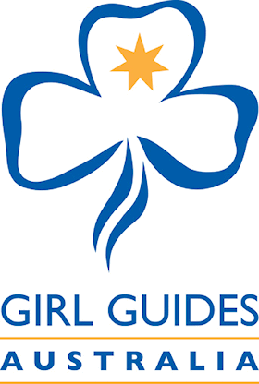
Scouting, also known as the Scout Movement, is a worldwide youth social movement employing the Scout method. It is a program of informal education with an emphasis on practical outdoor activities, including camping, woodcraft, aquatics, hiking, backpacking, and sports. Another widely recognized movement characteristic is the Scout uniform, by intent hiding all differences of social standing in a country and encouraging equality, with neckerchief and campaign hat or comparable headwear. Distinctive uniform insignia include the fleur-de-lis and the trefoil, as well as merit badges and other patches.

A Scout is a child, usually 10–18 years of age, participating in the worldwide Scouting movement. Because of the large age and development span, many Scouting associations have split this age group into a junior and a senior section. Scouts are organized into troops averaging 20–30 Scouts under the guidance of one or more Scout Leaders or Scoutmasters. Troops subdivide into patrols of about 6–8 Scouts and engage in outdoor and special interest activities. Troops may affiliate with local, national, and international organizations. Some national Scouting associations have special interest programs such as Air Scouts, Sea Scouts, outdoor high adventure, Scouting bands, and rider Scouts. In the United States there were around 6 million scouts in 2011.

Agnes Smyth Baden-Powell was the younger sister of Robert Baden-Powell, 1st Baron Baden-Powell, and was most noted for her work in establishing the Girl Guide movement as a female counterpart to her older brother's Scouting Movement.

Founded in 1908, The Scout Association of Malta (TSAM) is the Scouting organization in Malta. TSAM has always maintained a high and respectable Scouting tradition. Its leaders and members are committed to further the ideals of Scouting in line with those as traditionally established by the youth movement's Founder, Lord Robert Baden-Powell of Gilwell, and as further developed by the World Organization of the Scout Movement (WOSM). TSAM is a forward looking youth movement which, as a non-governmental organisation (NGO), enjoys great respect both locally and internationally. It is the only association in Malta which is recognised by the WOSM, and is also a member of the European Scout Region.

The Scout Association is the largest Scout organisation in the United Kingdom. Following the rapid development of the Scout Movement from 1907, The Scout Association was formed in 1910 and incorporated in 1912 by a royal charter under its previous name of The Boy Scouts Association. It is a founding member organisation of the World Organization of the Scout Movement.

Scouts South Africa is the World Organization of the Scout Movement (WOSM) recognised Scout association in South Africa. Scouting began in the United Kingdom in 1907 through the efforts of Robert Baden-Powell and rapidly spread to South Africa, with the first Scout troops appearing in 1908. South Africa has contributed many traditions and symbols to World Scouting.

Girlguiding is the operating name of The Guide Association, previously named The Girl Guides Association. It is the national guiding organisation of the United Kingdom. It is the UK's largest girl-only youth organisation. Girlguiding is a charitable organisation.

Rovers or Rovering is a programme associated with some Scout organizations for adults, originated by The Boy Scouts Association in the United Kingdom in 1918 to provide a programme for young men who had grown up beyond the age range of the Boy Scouts. It was adopted by many other Scouting organisations. A group of Rovers is called a 'Rover Crew'.
Traditional Scouting is "old-fashioned" or "back to basics" Scouting in some form, often with an emphasis on woodcraft and scoutcraft activities. As a pluralist movement, there is no one set definition for the term, but most traditionalists share a common set of values and procedures. Traditionalists aim to return the Scout Movement to something approximating its original style and activities; rejecting the trend of modernizing the program in an attempt to widen its appeal and/or use the name "Scouts" for new programs for ever-younger children.
Scouting started in Victoria, Australia, as early as 1907 and local Boy Scout patrols and troops formed independently. Several separate central organisations began operating including Boys' Brigade Scouts, Church Lads' Brigade Scouts, Chums Scouts, Imperial Boy Scouts, Girl Peace Scouts, Imperial Boy Scouts Victoria Section, Imperial Boy Scouts Victorian Section, Gippsland Boy Scouts Association, Australian Boy Scouts, Australian Imperial Boy Scouts, The Boy Scouts Association, Life-Saving Scouts of the Salvation Army and Methodist Boy Scouts.
Lone Scouts are members of the Scout movement who undertake scout activities on their own or by distance communication, usually because they live in isolated areas or otherwise do not participate in scout activities with other scouts. A Lone Scout may have an adult Scout leader or counselor who may instruct and supervise them. They can follow the same program as other Scouts and may advance in the same way as all other Scouts.
Beavers is a programme associated with some Scouting organisations generally for children aged 5/6 to 7/8 who are too young for the Cub programme.
Lone Guides or Lones are Girl Guides and Girl Scouts who do not attend group meetings for a variety of reasons. They are organised into groups that keep in touch, for example, by letter or email. Members carry out their organisation's normal programme on their own as much as they are able. The first official Lone Guides started in 1912 in the UK. Many countries have Lone Guides.

Girl Guides Australia (GGA) is the national Guiding organisation in Australia. Its mission is to empower girls and young women to grow into confident, self-respecting members of the community. Membership is open to all girls and young women from all cultures, faiths and traditions. Guiding groups formed in Australia as early as 1909, and by 1920 Girl Guide Associations had been formed in six states. In 1926 the State Associations federated and formed a national organization which became a founding member of the World Association of Girl Guides and Girl Scouts in 1928. It still operates as a federated structure made up of six state-based Guiding organisations. It has roughly 19,000 members including adult and youth members. Over a million Australian women are or have been Guides. The Girl Guide emblem incorporates the Commonwealth Star.

GirlGuiding New Zealand is the national Guiding organisation in New Zealand. GirlGuiding New Zealand currently splits New Zealand into 8 regions around the country with approximately 10,000 members.
A Ranger or Ranger Guide is a member of a section of some Guiding organisations who is between the ages of 14 and 18. It is the female-centred equivalent of the Rover Scouts.
The Scout and Guide movement in Australia consists of:
The Scout and Guide movement in Malta is served by three organizations:

A Scout troop is a term adopted into use with Boy Scouts, Girl Scouts and the Scout Movement to describe their basic units. The term troop echoes a group of mounted scouts in the military or an expedition and follows the terms cavalry, mounted infantry and mounted police use for organizational units.

Girl Guides is a worldwide movement, originally and largely still designed for girls and women only. The movement began in 1909, when girls requested to join the then-grassroots Boy Scout Movement.













